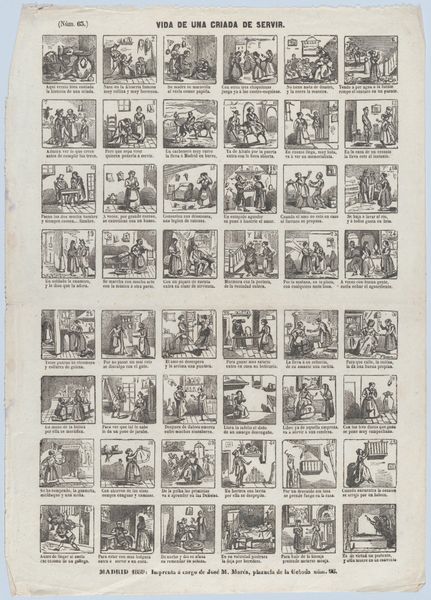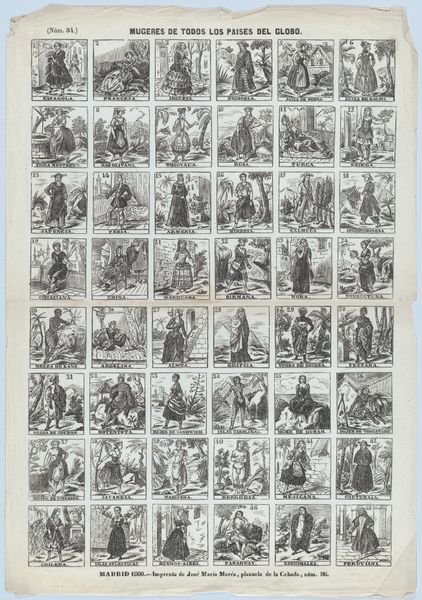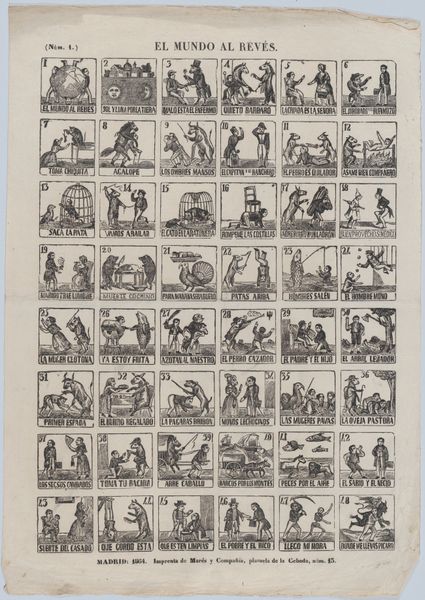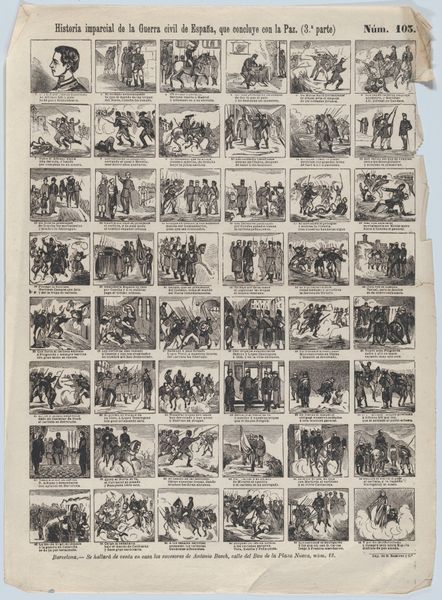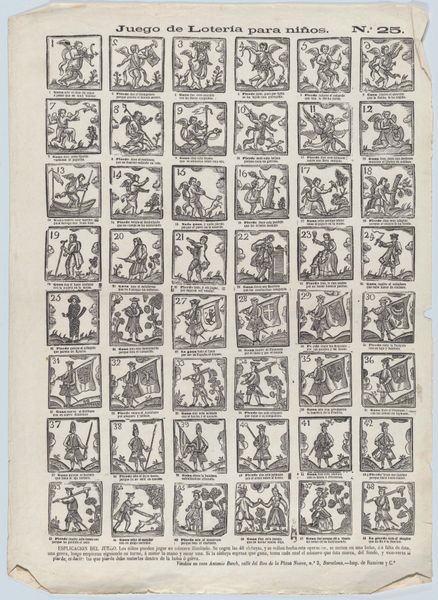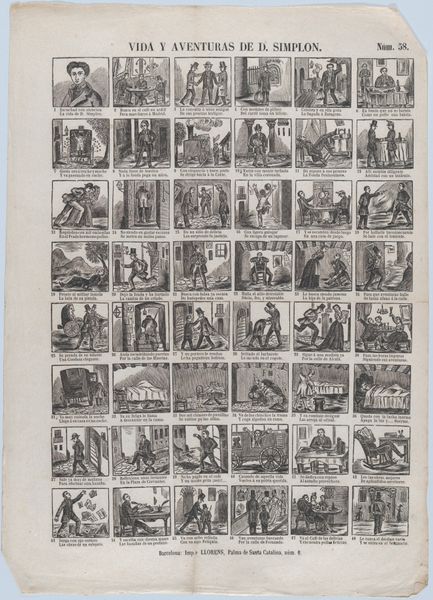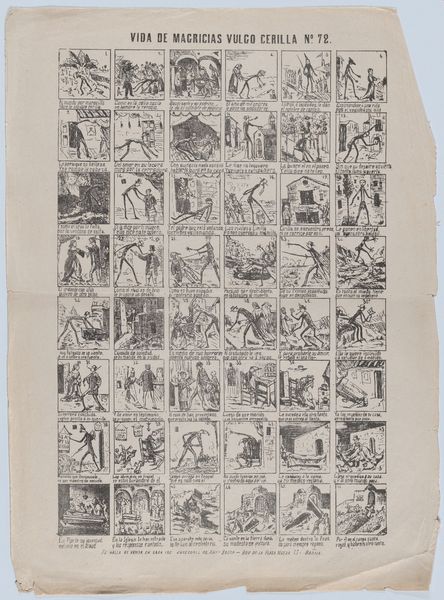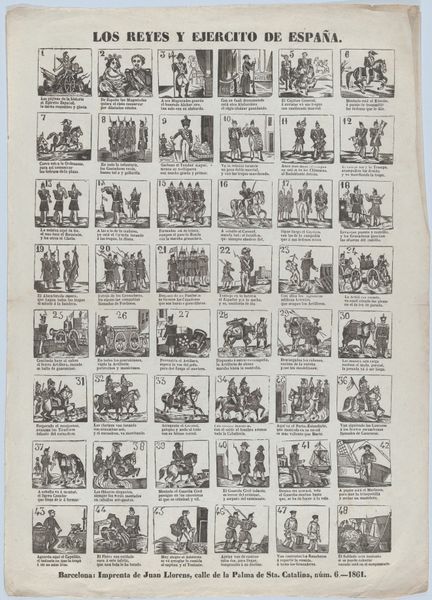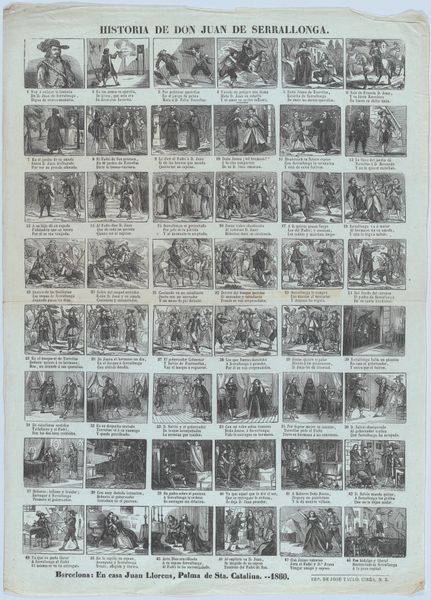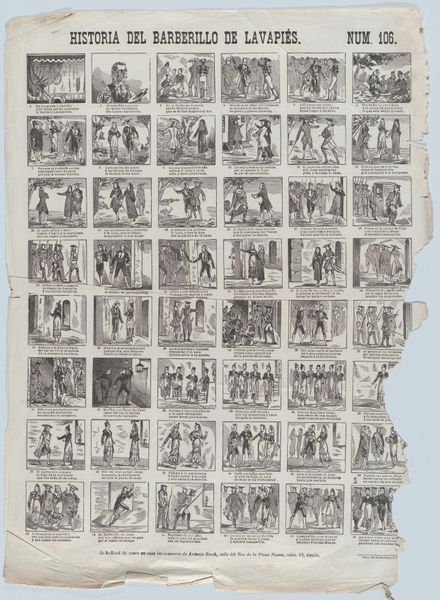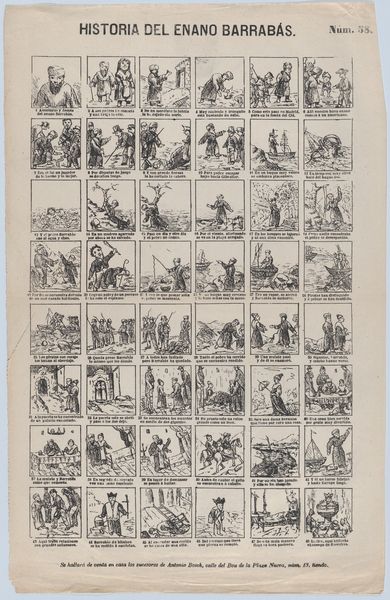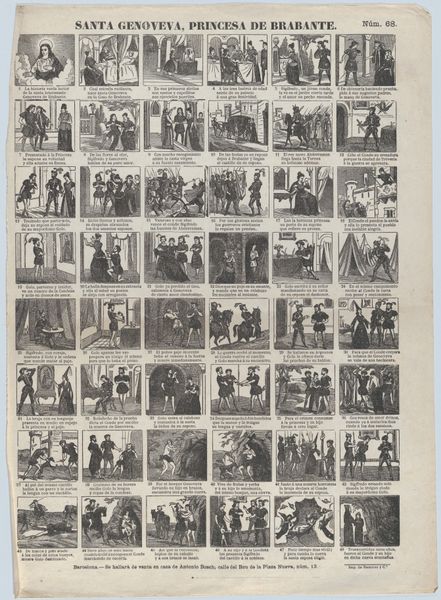
Broadside with 48 scenes of different subjects 1860 - 1870
0:00
0:00
drawing, print, engraving
#
drawing
#
narrative-art
# print
#
genre-painting
#
history-painting
#
engraving
Dimensions: Sheet: 17 5/16 in. × 13 in. (44 × 33 cm)
Copyright: Public Domain
Editor: This is "Broadside with 48 scenes of different subjects," an engraving made between 1860 and 1870 by Antonio Bosch. It reminds me a bit of a comic strip, but all crammed onto one page! What's your interpretation of this dense, narrative print? Curator: Look closely at the repetitive nature of the images. The print was made to be consumed widely and quickly, not to be meticulously contemplated as fine art. It's cheap to produce, easy to distribute. Think about who the target audience might have been. What does this reveal about the societal conditions of that era? Editor: So, its value isn't necessarily in its artistic skill but in its accessibility and the social commentary it provides? The everyday scenes feel significant when considered en masse. Curator: Precisely. The engraving medium itself is crucial here. Unlike painting or sculpture, engraving allowed for mass production. Notice the material conditions of its creation—the labor involved, the dissemination methods, and its affordability. Were these images created with high artistic intentions, or to communicate stories to a wide audience in a rapidly industrializing world? Editor: I never thought about it that way, focusing less on the content of each image and more on its creation as a widely accessible object. It's fascinating how the method of production really shapes our understanding. Curator: By analyzing the materials and methods, we're given insights into the cultural values and economic forces at play when it was made. It highlights how art blurs with craft, commerce, and social commentary, depending on production and context. Editor: I appreciate learning to consider the "how" and "why" of its making alongside the "what."
Comments
No comments
Be the first to comment and join the conversation on the ultimate creative platform.
